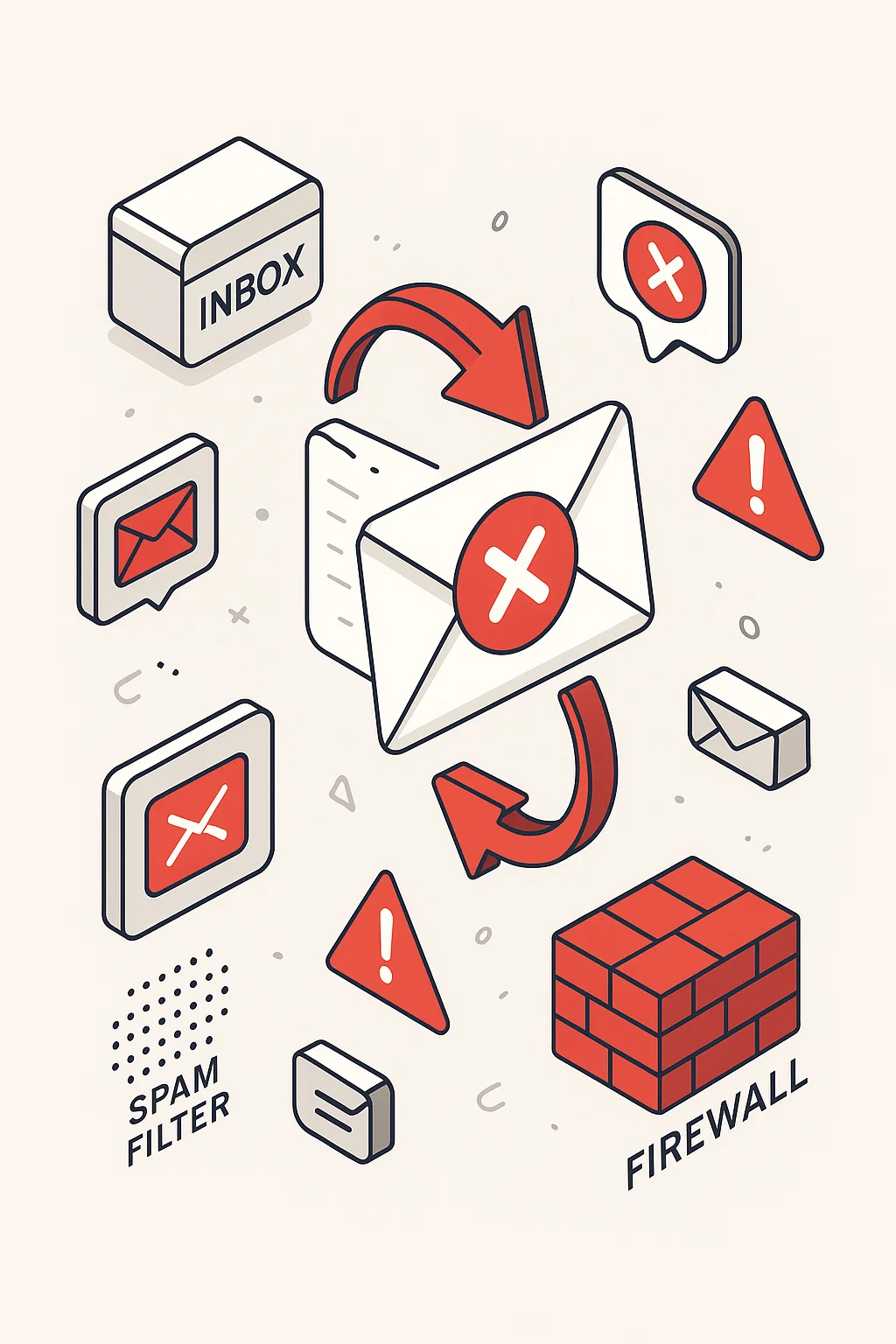📩 What Is Mail Bounce? How to Fix and Prevent It | NonBunce
Have you ever sent an important email only to find out it never reached the recipient? That, my friend, is a case of mail bounce — a common and critical issue for email marketers, businesses, and individuals relying on digital communication.
In this guide from NonBunce, we’ll break down:
-
What email bounce really means
-
Types of bounces (hard vs soft)
-
Why your emails are bouncing
-
How to fix bounce issues
-
Pro strategies to reduce your bounce rate
Let’s dive in 👇
🚨 What Is Mail Bounce?
A mail bounce happens when your email fails to reach the recipient’s inbox and gets returned to the sender. It’s like sending a letter via post, but the address is wrong — so it comes back.
In email terms, it means: "The email you tried to send has been rejected by the recipient’s mail server."
Every time this happens, your email system receives a bounce-back message — often with a cryptic error code or technical jargon.
🧱 Types of Email Bounce
1. Hard Bounce
A permanent failure to deliver your email.
Causes:
-
Email address doesn't exist
-
Domain name is invalid
-
Recipient’s server has blocked your domain
✅ Tip from NonBunce: Immediately remove hard bounce emails from your list to protect your sender reputation.
2. Soft Bounce
A temporary failure to deliver an email.
Causes:
-
Recipient’s inbox is full
-
Email server is temporarily down
-
Message is too large
✅ Tip from NonBunce: Retry sending later or after optimizing email size.
🤔 Why Do Emails Bounce?
Here are the most common reasons emails bounce back:
1. ❌ Invalid Email Address
Typos, formatting errors, or outdated addresses.
2. 🚫 Blacklisted IP or Domain
If your server is marked as spammy, ISPs will reject your emails.
3. 🧼 Dirty Email List
Old, unverified, or purchased email lists often cause high bounce rates.
4. 🔐 Spam Filters & Firewalls
Aggressive filters block unknown senders or suspicious content.
5. 📩 Full Mailbox
The recipient’s inbox has reached its storage limit.
6. 📛 DNS or SMTP Configuration Errors
Incorrect server settings lead to technical delivery failures.
🔍 Bounce Codes You Should Know
Here are some common SMTP bounce codes and their meanings:
| Code | Type | Meaning |
|---|---|---|
| 550 | Hard Bounce | Email address not found |
| 552 | Soft Bounce | Storage limit exceeded |
| 421 | Soft Bounce | Server temporarily unavailable |
| 554 | Hard Bounce | Message rejected by the server |
📉 Why High Bounce Rates Are Bad for You
A high bounce rate isn’t just a delivery issue — it’s a reputation killer.
Here’s what it can affect:
-
🟠 Sender Score: Internet providers trust you less.
-
🟠 Deliverability: Emails land in spam or get blocked.
-
🟠 Campaign Performance: You lose leads, clicks, and sales.
-
🟠 Compliance: Could breach anti-spam laws like GDPR or CAN-SPAM.
✅ How to Reduce Email Bounce Rate
Here’s your NonBunce-approved strategy to keep bounce rates low:
1. Use Double Opt-In
Verify emails during signup with confirmation links.
2. Clean Your Email List Regularly
Remove:
-
Inactive users
-
Invalid addresses
-
Role-based emails (like info@, admin@)
Use NonBunce Email Verifier →
We scan your list and flag risky addresses in seconds.
3. Authenticate Your Domain
Set up:
-
✅ SPF (Sender Policy Framework)
-
✅ DKIM (DomainKeys Identified Mail)
-
✅ DMARC policies
This tells email servers you’re legit.
4. Avoid Spam Triggers
Don’t use:
-
ALL CAPS
-
Clickbait phrases like “FREE MONEY”
-
Overuse of emojis
5. Segment Your Lists
Target users by behavior, interest, or location.
More relevant emails = lower bounce and higher engagement.
🔧 How to Fix Bounced Emails
-
Check the Bounce Message
Decode error using NonBunce or a bounce lookup tool. -
Verify the Email Address
Look for typos or format issues. -
Retry Sending (Soft Bounces Only)
Sometimes the server was just temporarily down. -
Contact the Recipient (if critical)
Reach out via alternate channel (social media, phone, etc.) -
Use an Email Deliverability Tool
NonBunce can monitor and flag deliverability issues in real time.
📈 What’s a Good Bounce Rate?
Here’s a general guideline:
| Email Type | Acceptable Bounce Rate |
|---|---|
| Newsletter | < 2% |
| Transactional | < 0.5% |
| Cold Outreach | < 5% |
If you’re over these limits — it’s time to clean your list and optimize.
🚀 Introducing NonBunce: Your Email Hygiene Partner
NonBunce helps you reduce bounce rate, protect your domain reputation, and maximize email deliverability.
🔧 Key Features:
-
Real-time email verification
-
Bounce reason analysis
-
Domain blacklisting checks
-
API integration for sign-up forms
-
Easy list cleaning in 1 click
Whether you’re a startup, SaaS, or an email marketer — NonBunce is the smart, fast way to stop bounce before it ruins your ROI.
🔚 Conclusion: Don’t Let Bounce Kill Your Email Game
Bounced emails are more than just a nuisance — they can silently sabotage your entire marketing strategy. But with the right tools and strategies (hello, NonBunce 👋), you can clean up your list, fix what’s broken, and make every email count.
📣 Ready to Eliminate Mail Bounce Forever?
Try NonBunce today — the smart way to stop bounce.


